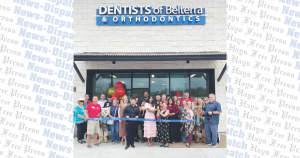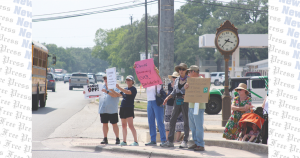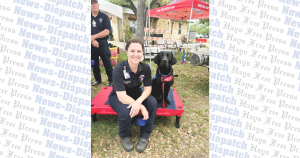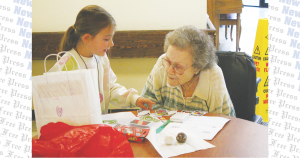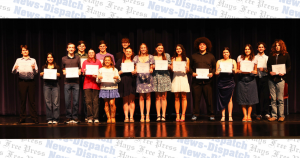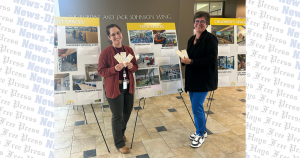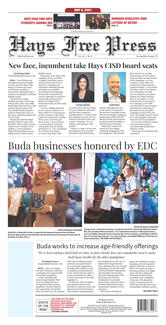
KYLE — Kyle City Council listened to a presentation regarding programming and concepts for the highly-anticipated senior center, to be located at 1500 Dacy Lane in Kyle, at its March 18 meeting.
“We’ve shortened our timeline that was projected for public input, but we didn’t short- change the process and, with a lot of due diligence and a lot of hard work by staff and our architectural consultant, we feel that we’ve rendered a good product in partnering with the entire community,” said Parks and Recreation Director David Lopez.
According to Lopez, the city conducted two facility tours with the Kyle Area Senior Zone (KASZ) at the 10,000 square-foot facility and hosted two focus groups with senior populations, one with KASZ members and one without, as well as a community input meeting. Afterwards, the feedback was given to the Parks and Recreation Board to receive recommendations to present to council.
The 2021 KASZ feasibility study was also included when considering recommendations.
According to Brinkley Sargent Wiginton Architects (BSW) Senior Principal Stephen Springs, the focus groups had two goals: to explain the nature of the facility as it currently is and what, if the older adults could pick anything, they would fill it with. From this, the following priorities were displayed:
Focus group one, non-KASZ members:
• Commercial kitchen
• Multipurpose room
• Small classroom
• Social lounge
Focus group two, KASZ members:
• Multipurpose room
• Large classroom
• Small classroom
• Arts and crafts
Specifically, a commercial kitchen scored higher than a catering kitchen, which was explained to the focus groups, as Springs noted that there is a difference between the two.
The “dot-cracy” exercise, which allowed residents to put stickers on the amenities they favored, at the Jan. 29 come-and-go presentation meeting, yielded similar results, according to the presentation, with a commercial kitchen, a multipurpose room, classrooms and individual fitness considered a top priority to attendees.
“We took all this and said, ‘Okay. What options might fit based on the feedback we’re getting,’” said Springs.
Springs then presented council with three varying initial layouts: traditional, fitness and flex.
The first option, traditional, is named so because it is what is standard for more older adult facilities, said Springs, and is program focused, with a game room, classrooms, a kitchen and pantry, a multipurpose room, storage space and a lobby.
“The conversation really had to do with flexibility versus purpose-built spaces and a perfect example of that is that a classroom can theoretically accommodate a lot of different functions, whereas, a game room in this instance, is kind of purpose-built. A game room is likely to have, say, a pool table in it that you can’t just move around, move in and out, at a regular basis,” he explained.
The next was a fitness option, which had several of the same amenities, including a kitchen and pantry, multipurpose center and a lobby, but also included a fitness room and a group exercise space.
Finally, the flex area had the same basic amenities as featured in the previous two, but included a divisible classroom and a game room or arts and crafts room: “That was really presented as a what if. If you had one room that was a dedicated space, what would that space be?”
In addition to this, the KASZ board, Springs said, presented a layout, which focused on flexibility, but considered a centralized entrance, with the lobby in the center and a relocation of the kitchen.
“The feedback we received from Parks and Rec was very flexibility focused. They said make it as flexible as possible because you never know what future trends will come along,” said Springs. “They were less concerned with the dedicated spaces.”
After this, Springs presented the final two options to council, which took into consideration feedback.
The first is similar to the flex option, but has two open spaces at approximately 2,400-2,500 square feet, rather than being divided.
The second focused on the concept that KASZ brought forth, with a central entrance.
“We made two large rooms, but they’re only divisible into two [rather than three] and we brought that, I’ll call it a classroom, you see it in pink there that has yet undetermined potential,” explained Springs.
Council member Robert Rizo began the discussion, noting that he liked the flexible option, but opposed the wall in the dining area, as it limits space for tables. So, he suggested an open-concept instead, as this would be more appropriate for banquets, large dinners and more.
“Those are exactly the words I was going to use because you’ve got enough room for 100 on one side and about 100 on the other, but what if they’ve got an event with 150 people,” said Mayor Travis Mitchell. “I do think that if you end up with a space that only allows 90 people to have dinner or lunch that it’s going to be a mistake.”
“We would like to take all your feedback this evening, continue to work with our stakeholders, bring a design contract for consideration next council meeting and then, take 60 days or so to get through design, put it out for bid and another 90 days, hopefully, have a nice Christmas gift for our senior population,” said Lopez.
Council also unanimously approved a resolution authorizing the city manager to negotiate and execute a contract with Whirlix Design for the construction of a new playground at Steeplechase Park for $787,731. The design chosen by the public through a survey was the modern concept, which received 40% of the votes. The proposed improvements would include accessible surfacing, shade, new playground equipment, enhanced landscape and the addition of a sidewalk and seating around the playground, said Rosie Truelove, director of administrative services. According to Truelove, construction and a grand reopening would occur in August or September.
Additionally, in a 7-0 vote, council directed the city manager to bring an ordinance to create the Kyle Historical Archives Commission. This follows Mitchell’s effort to find historical photos of the city, as well as city council minutes, when he discovered that the city had a lack of preserved history.
“I think it’s a beautiful project and I think it’s worthwhile to invest in and to put the right resources and the right committee together to honor it and to do a great job with it,” said council member Miguel Zuniga.
To listen to discussions from the March 18 meeting, visit bit.ly/3RpzxvL.



